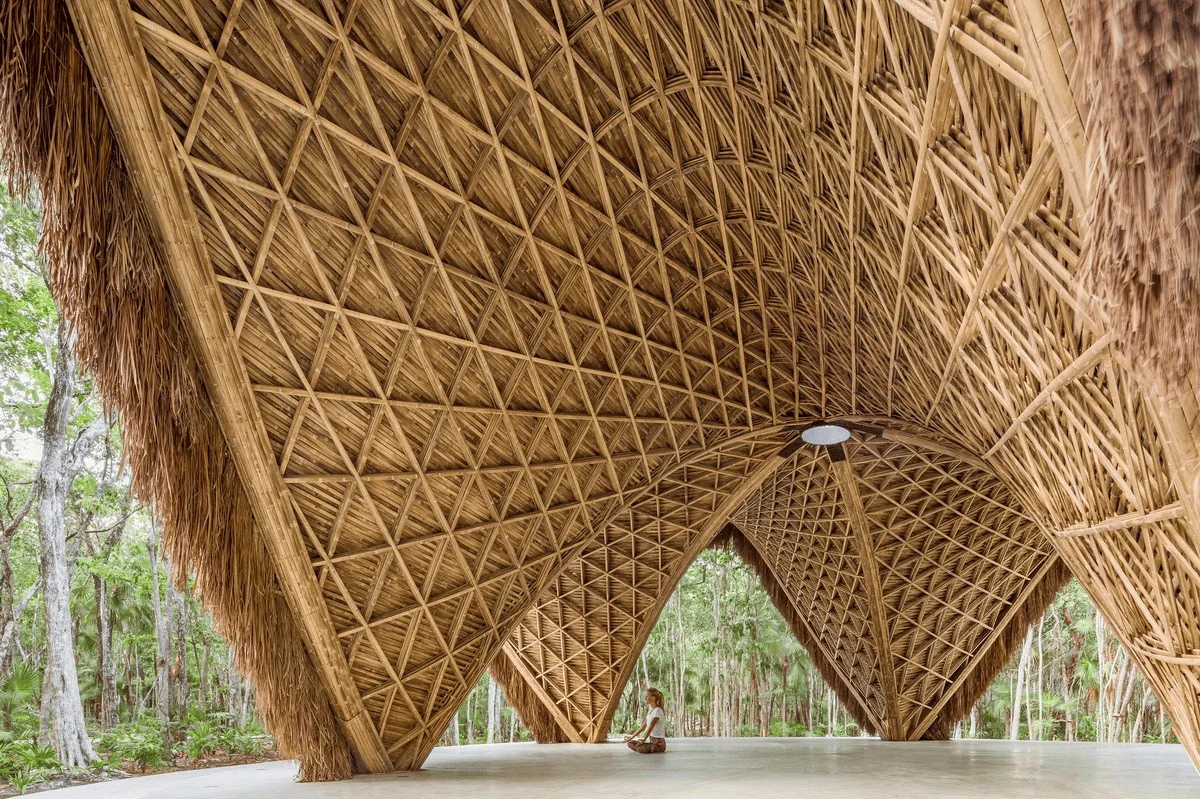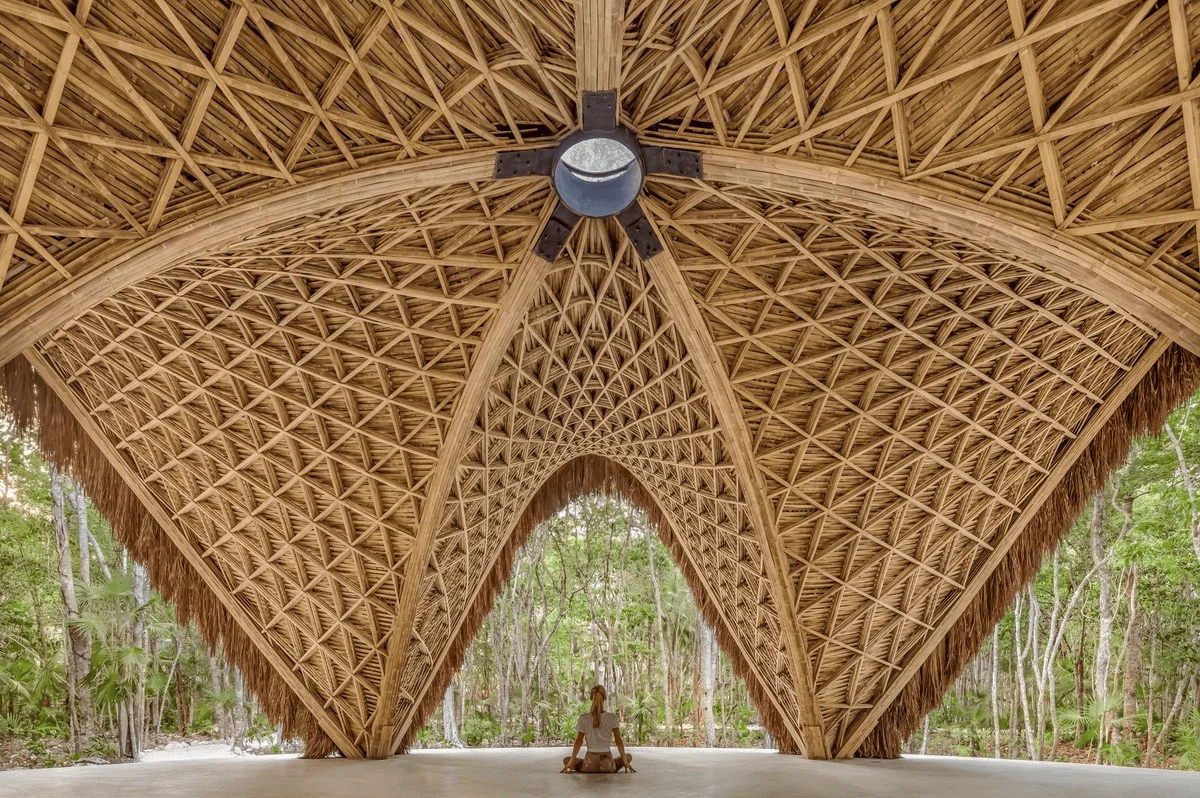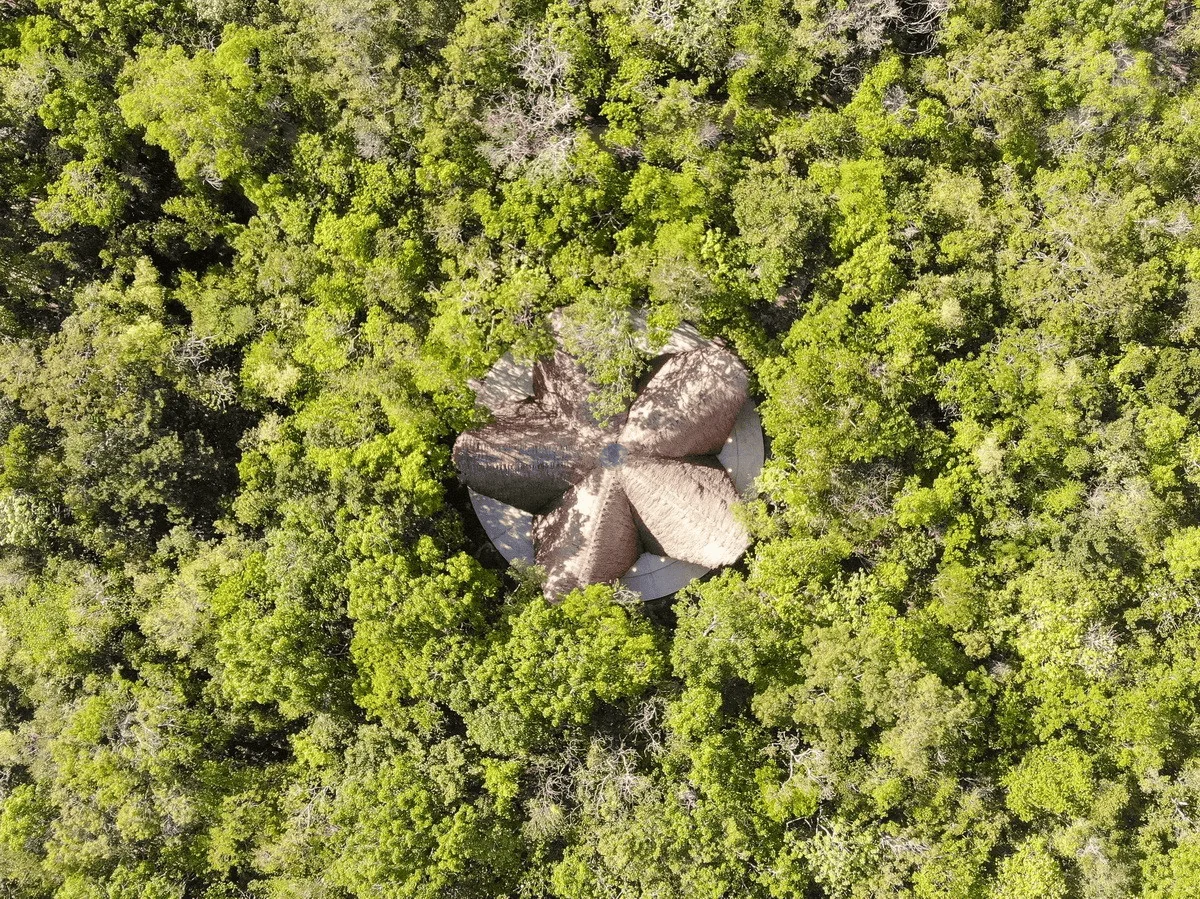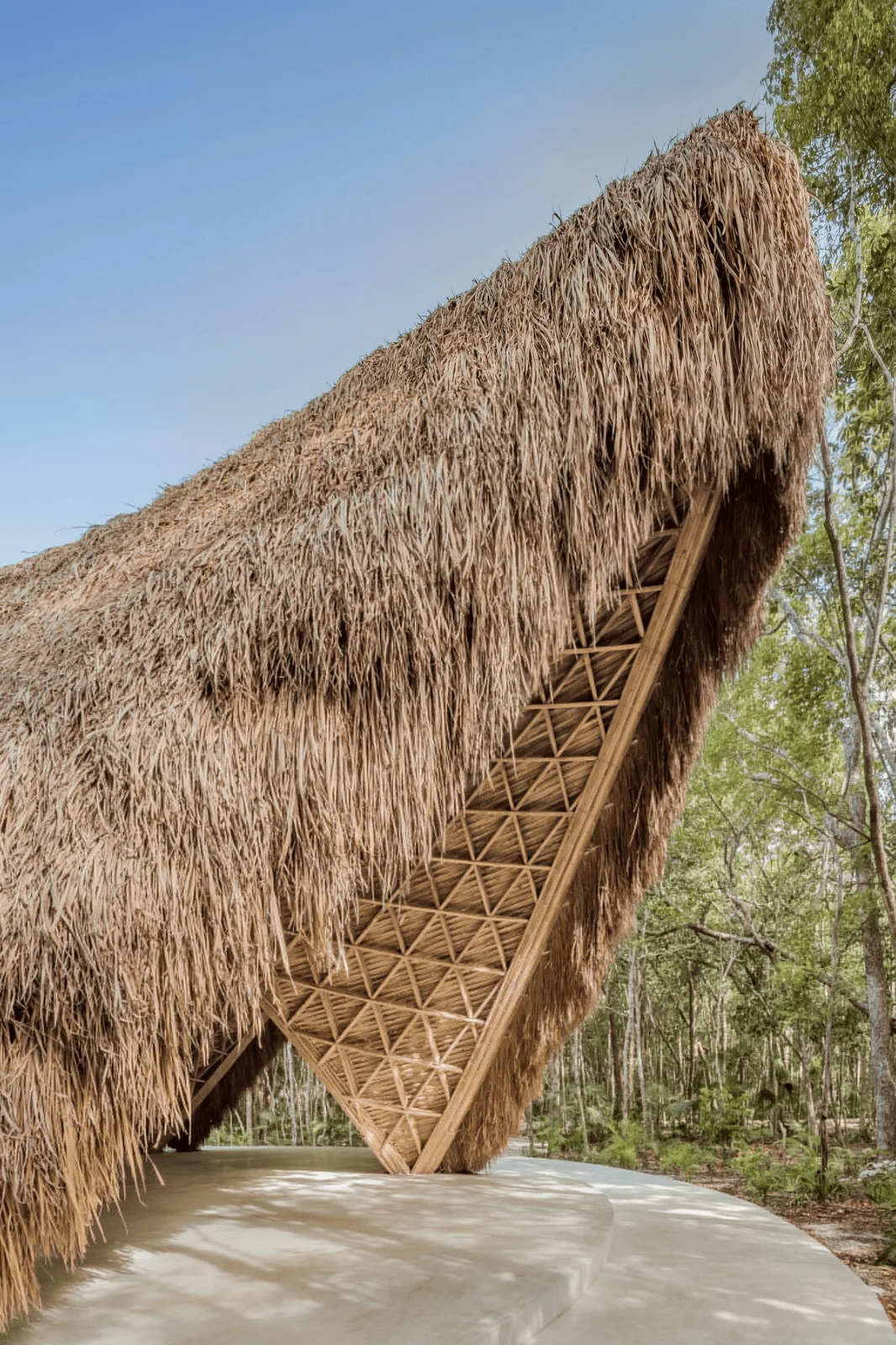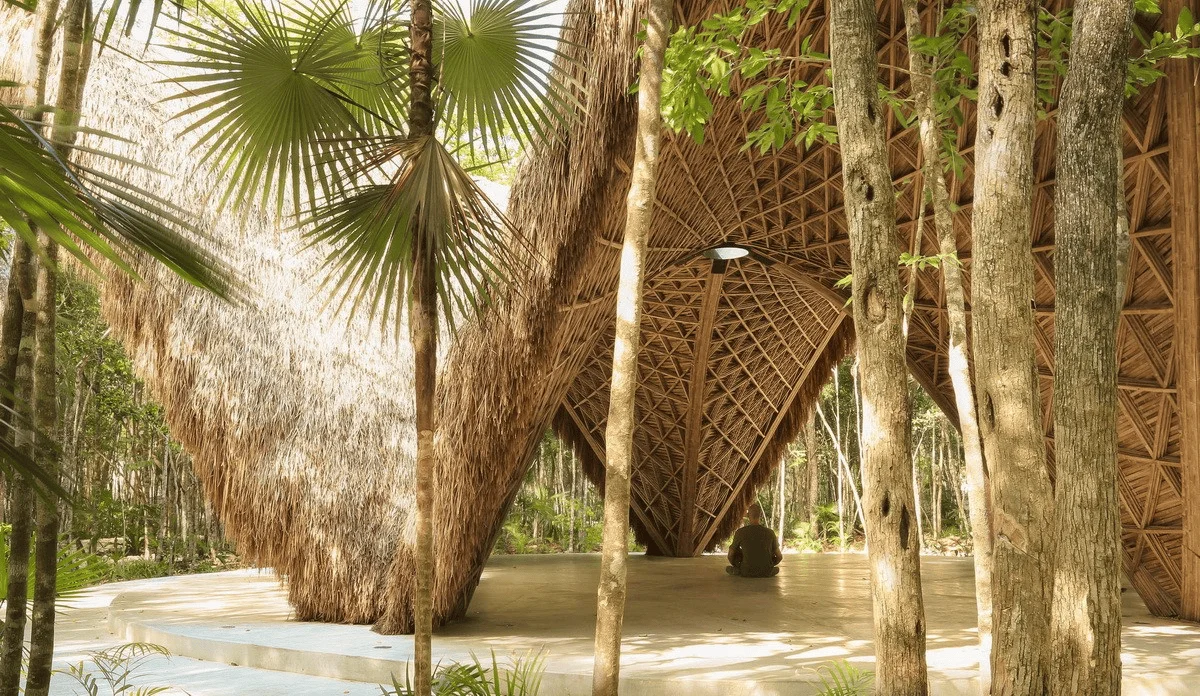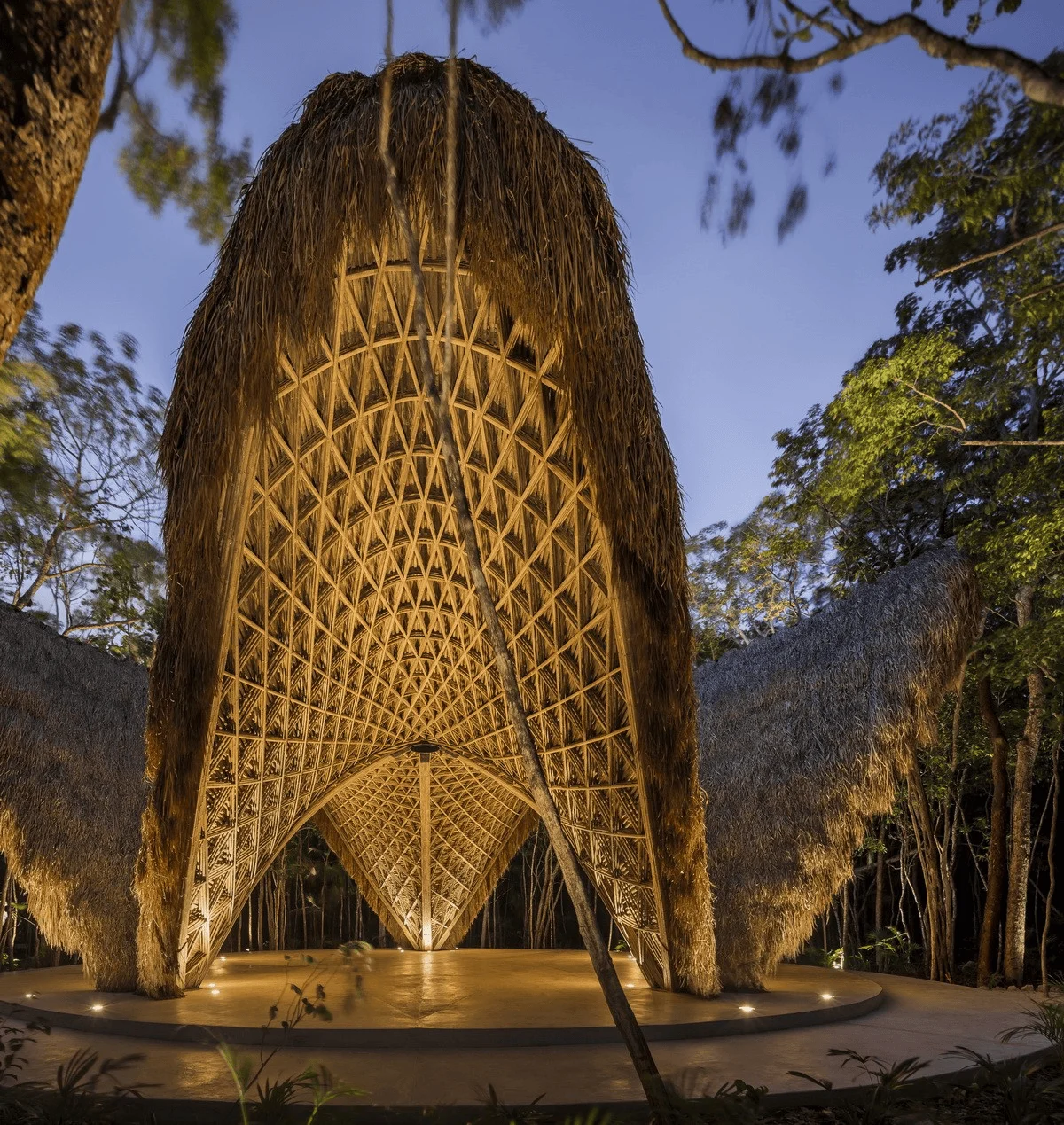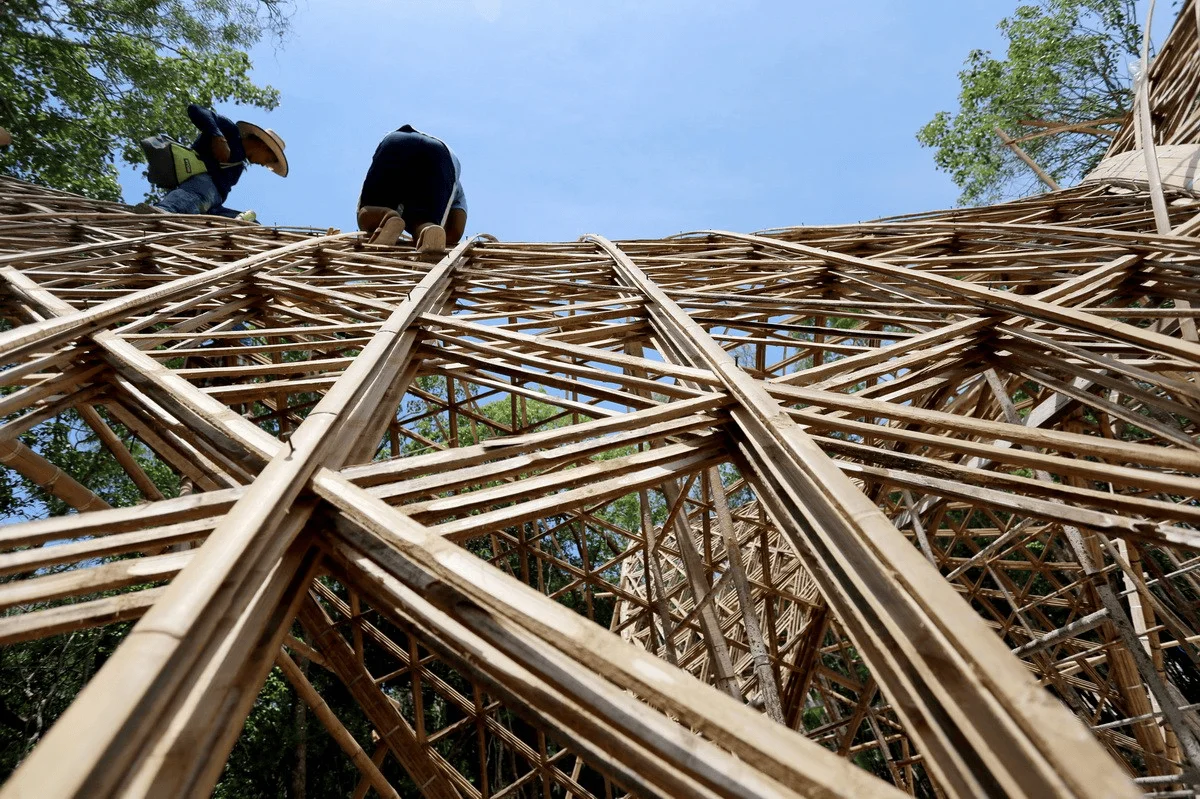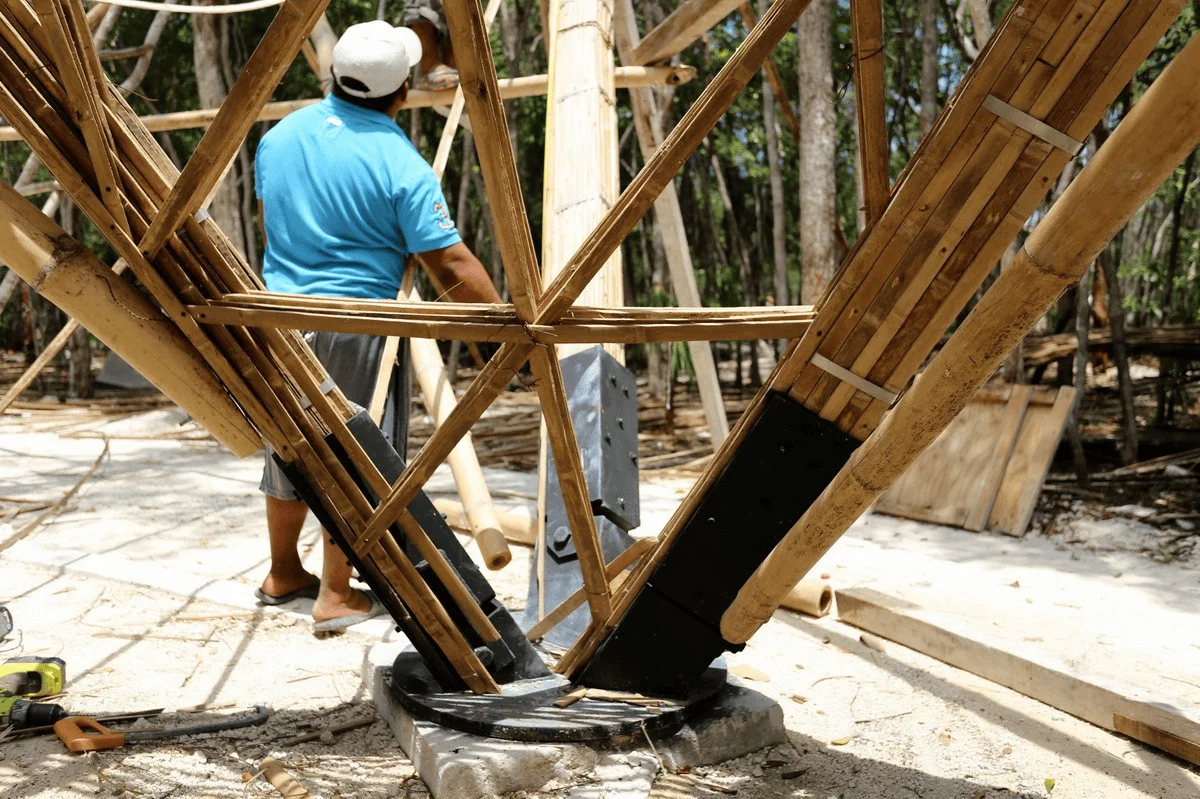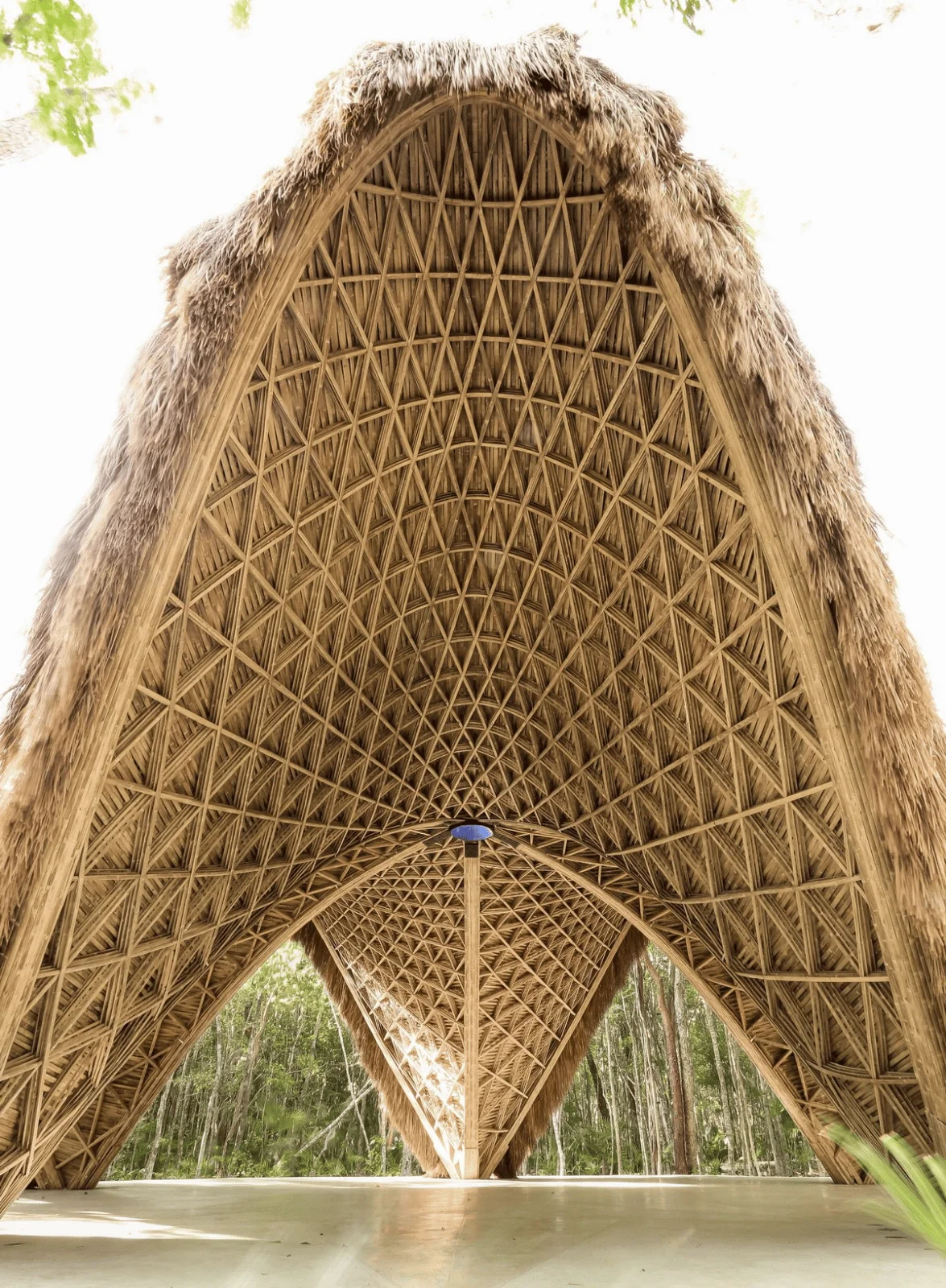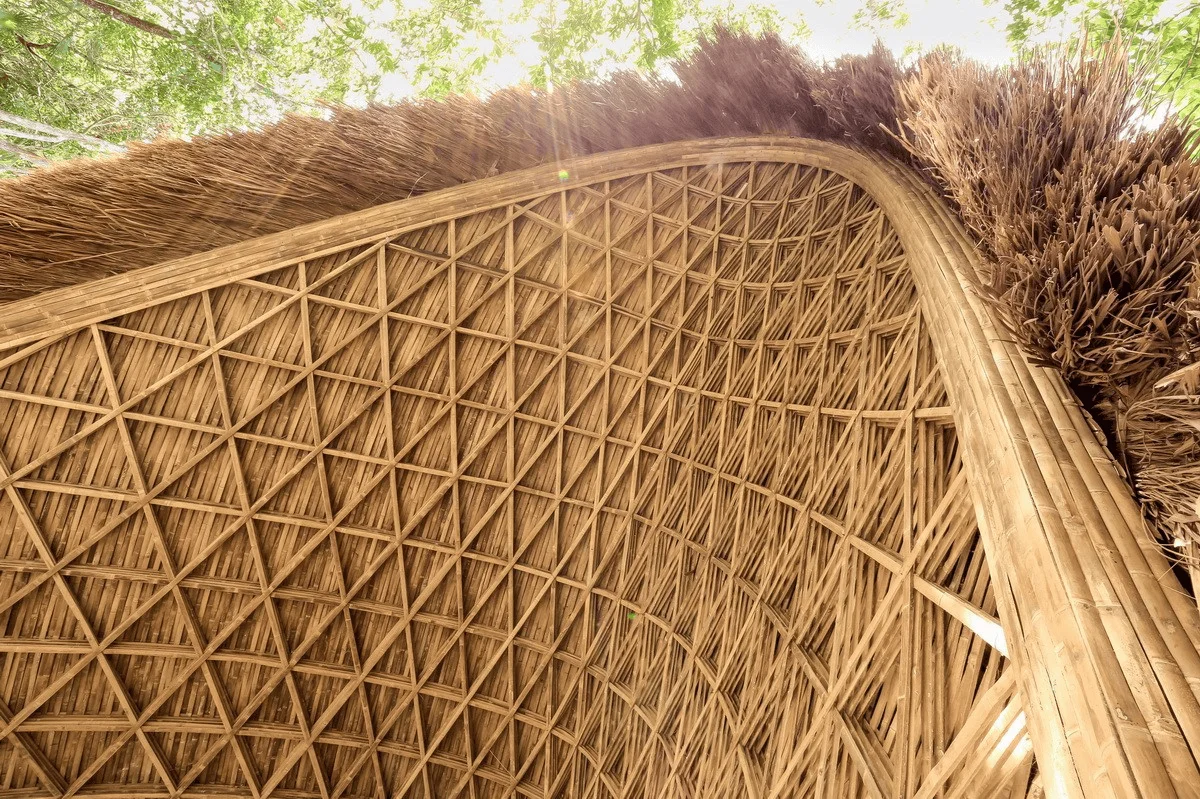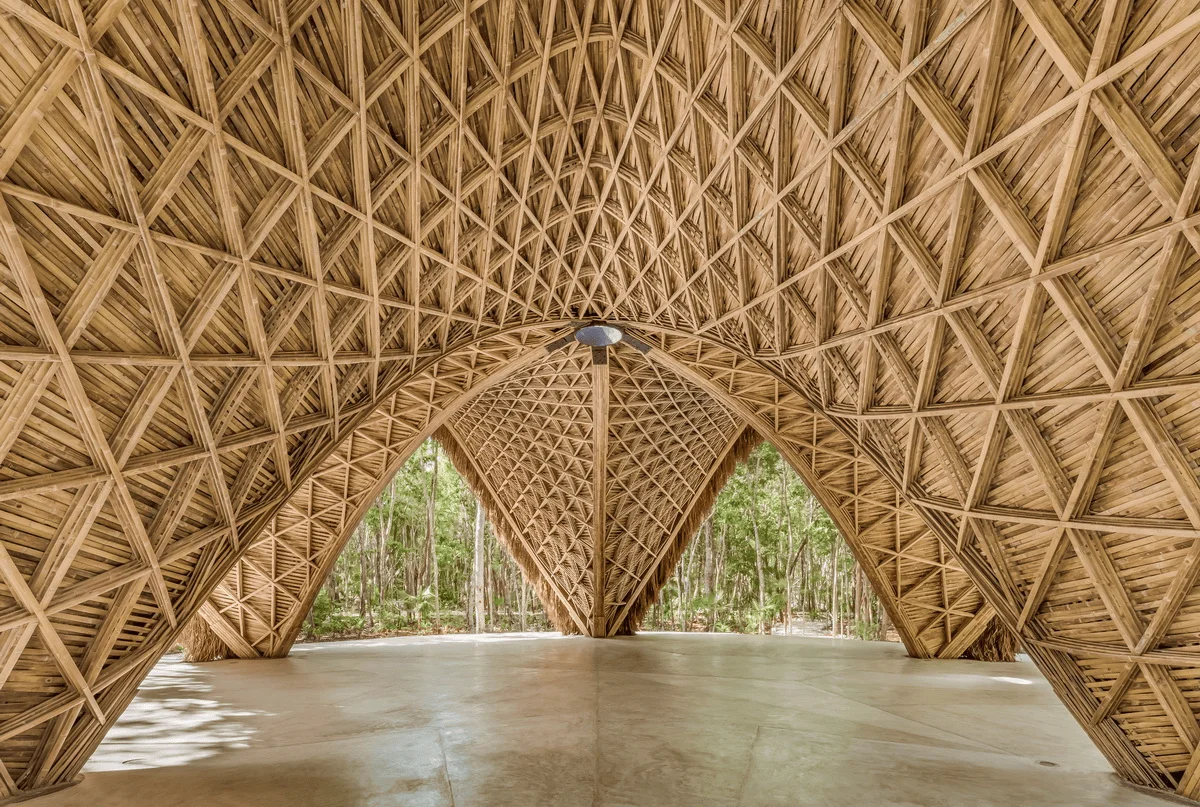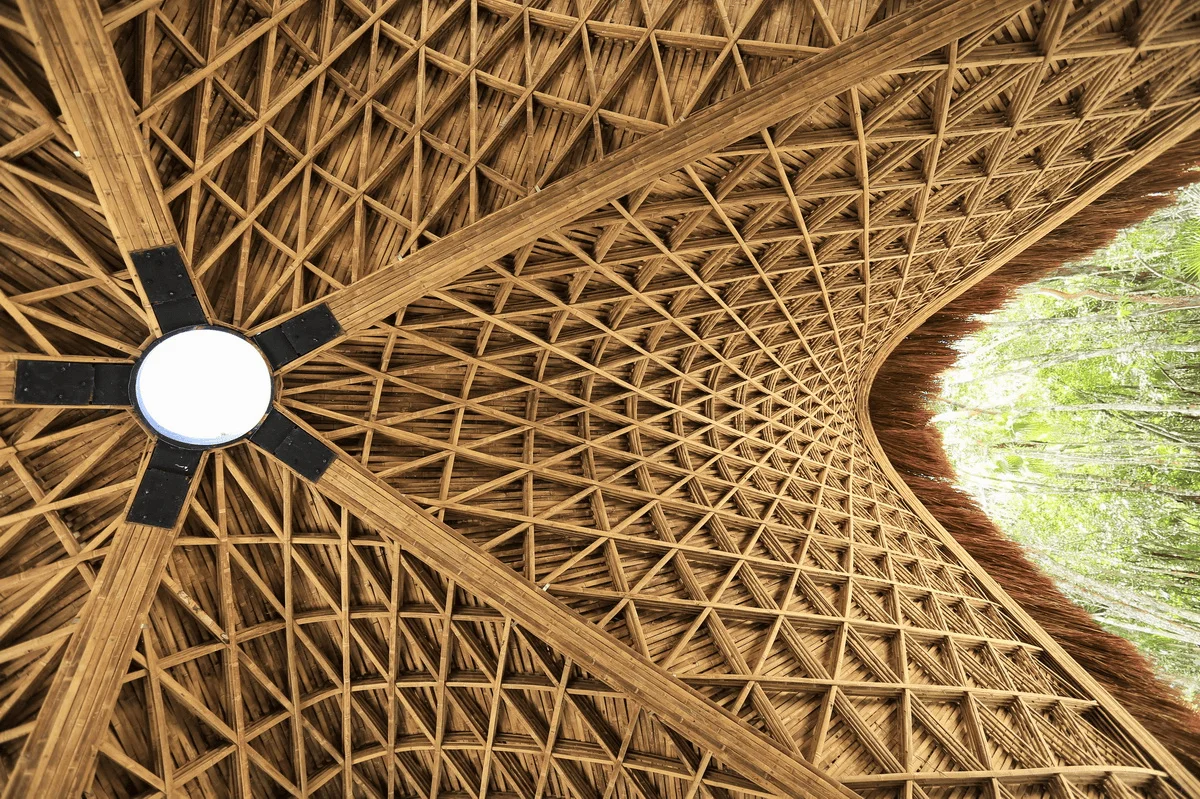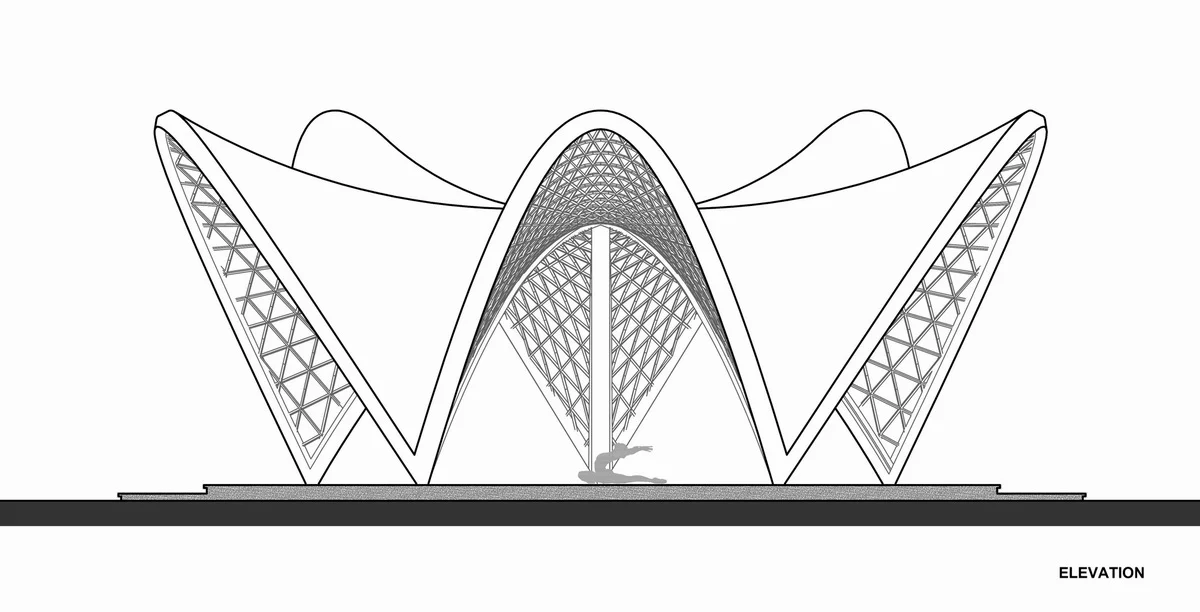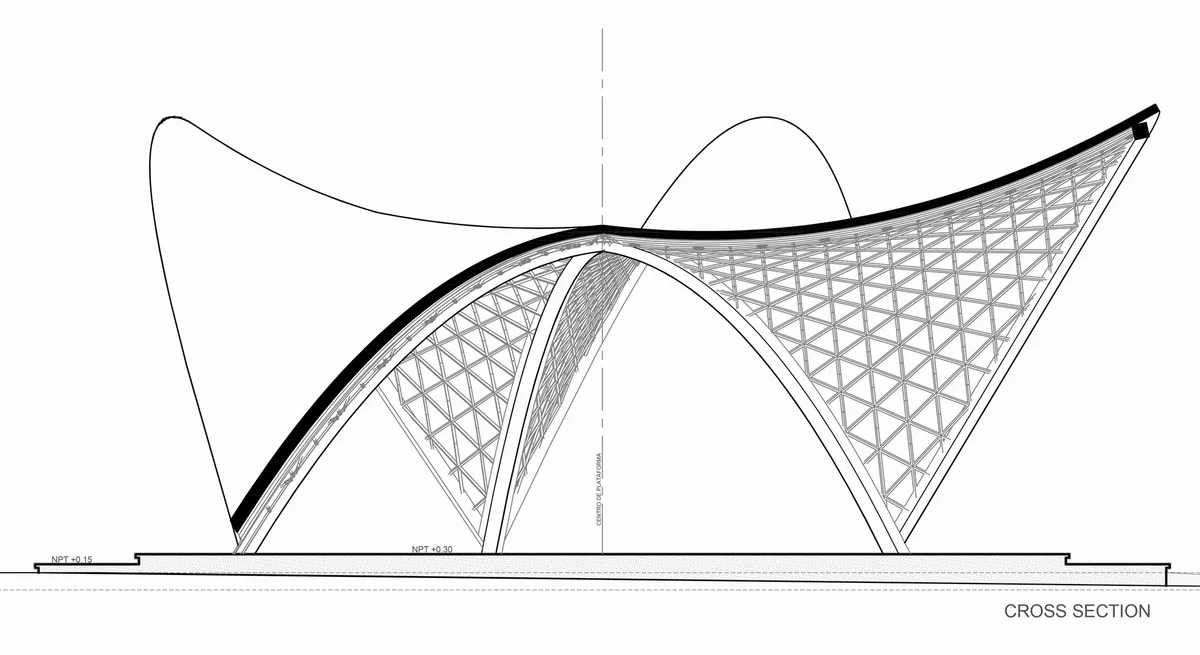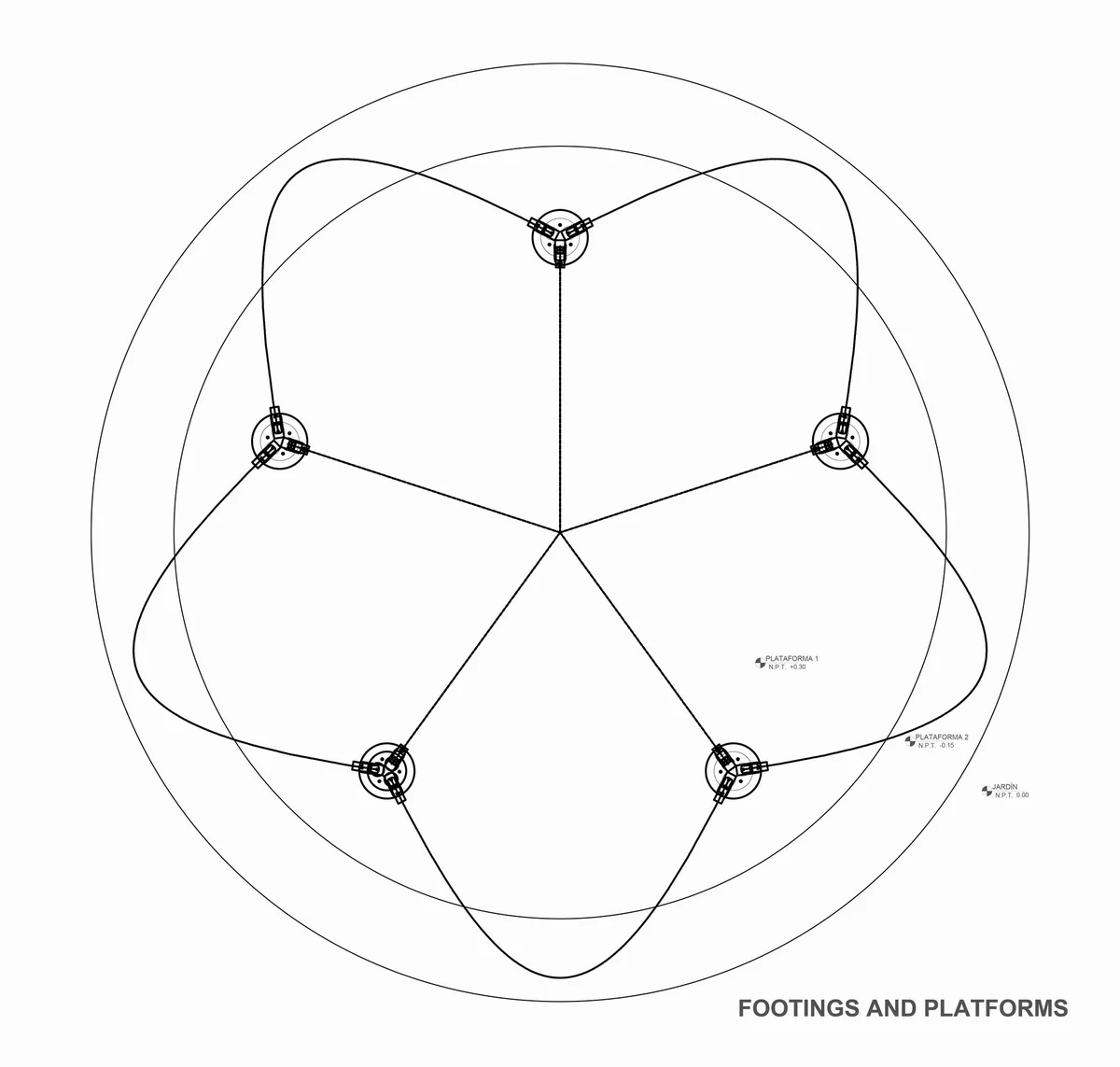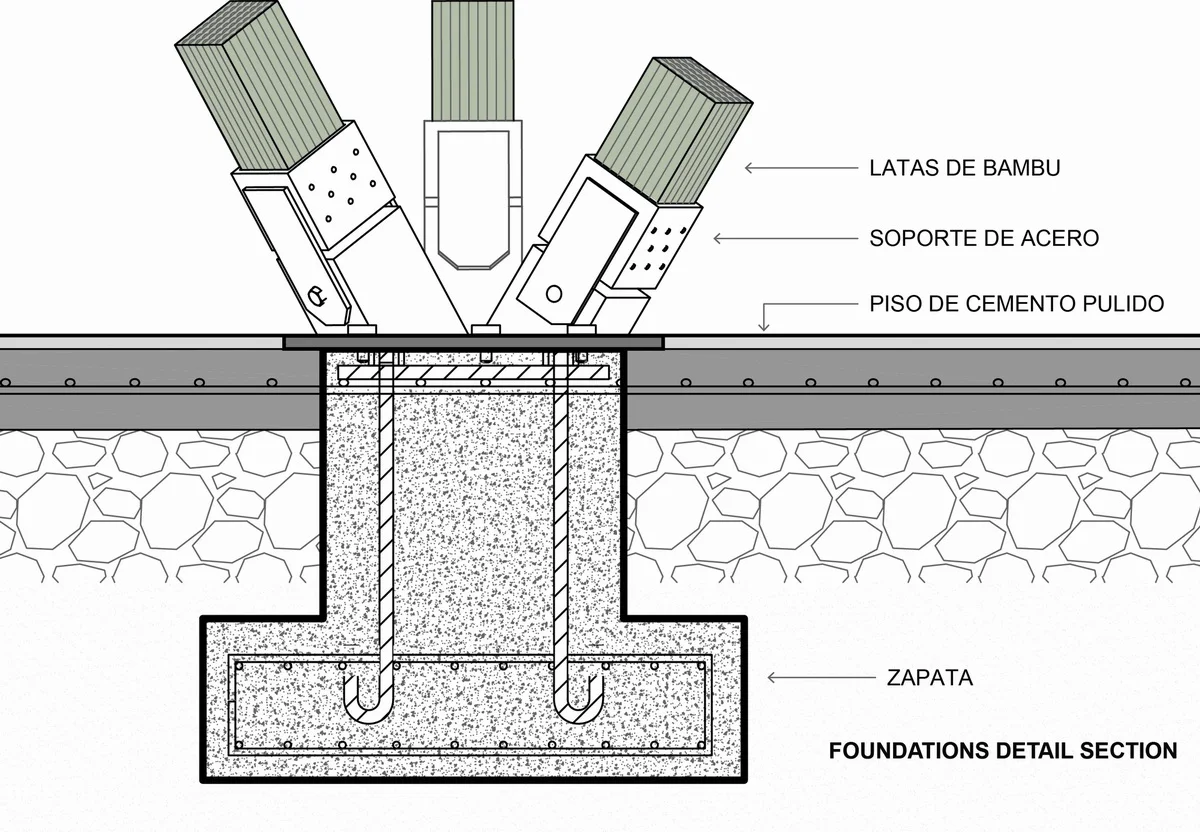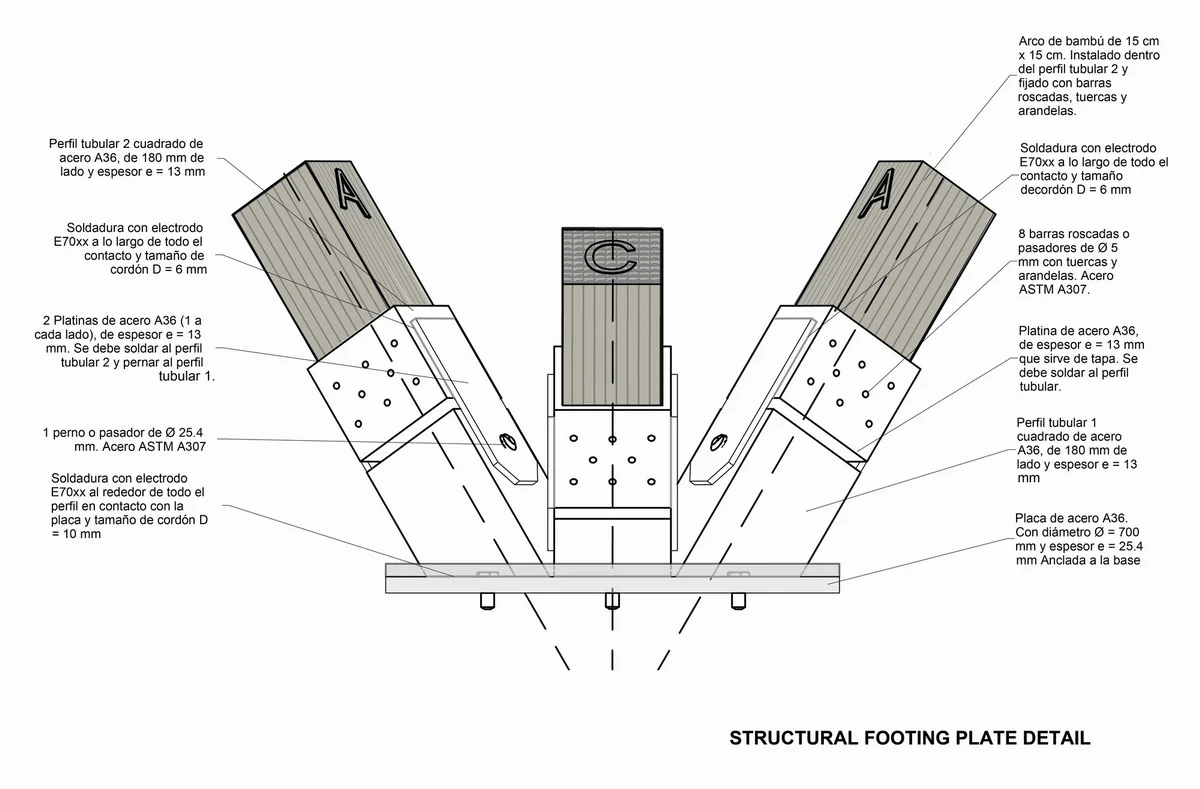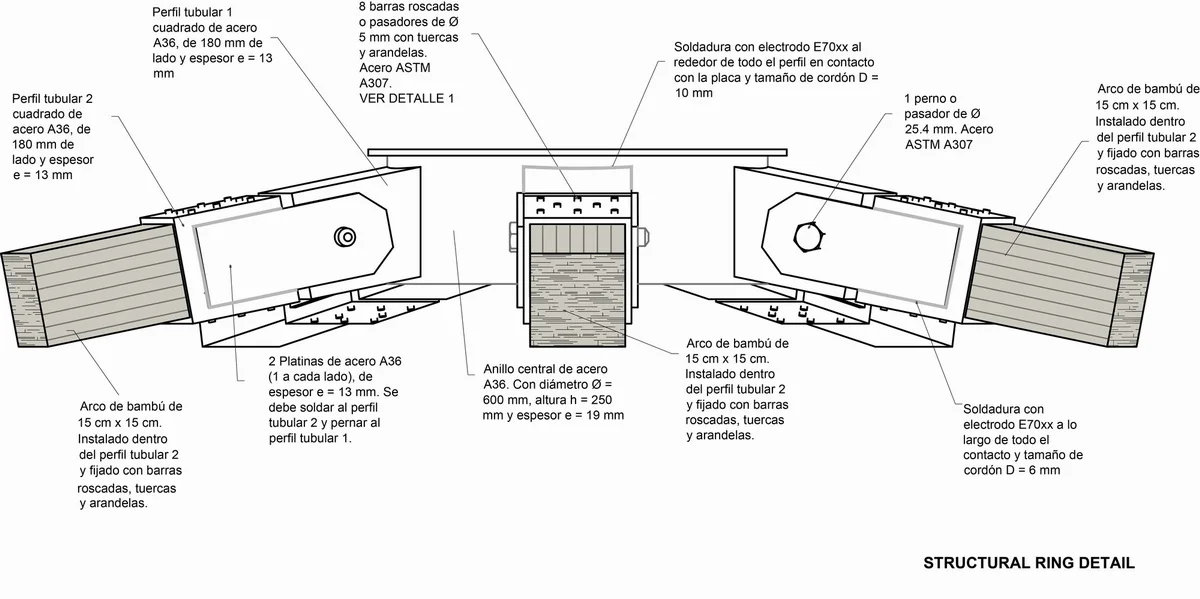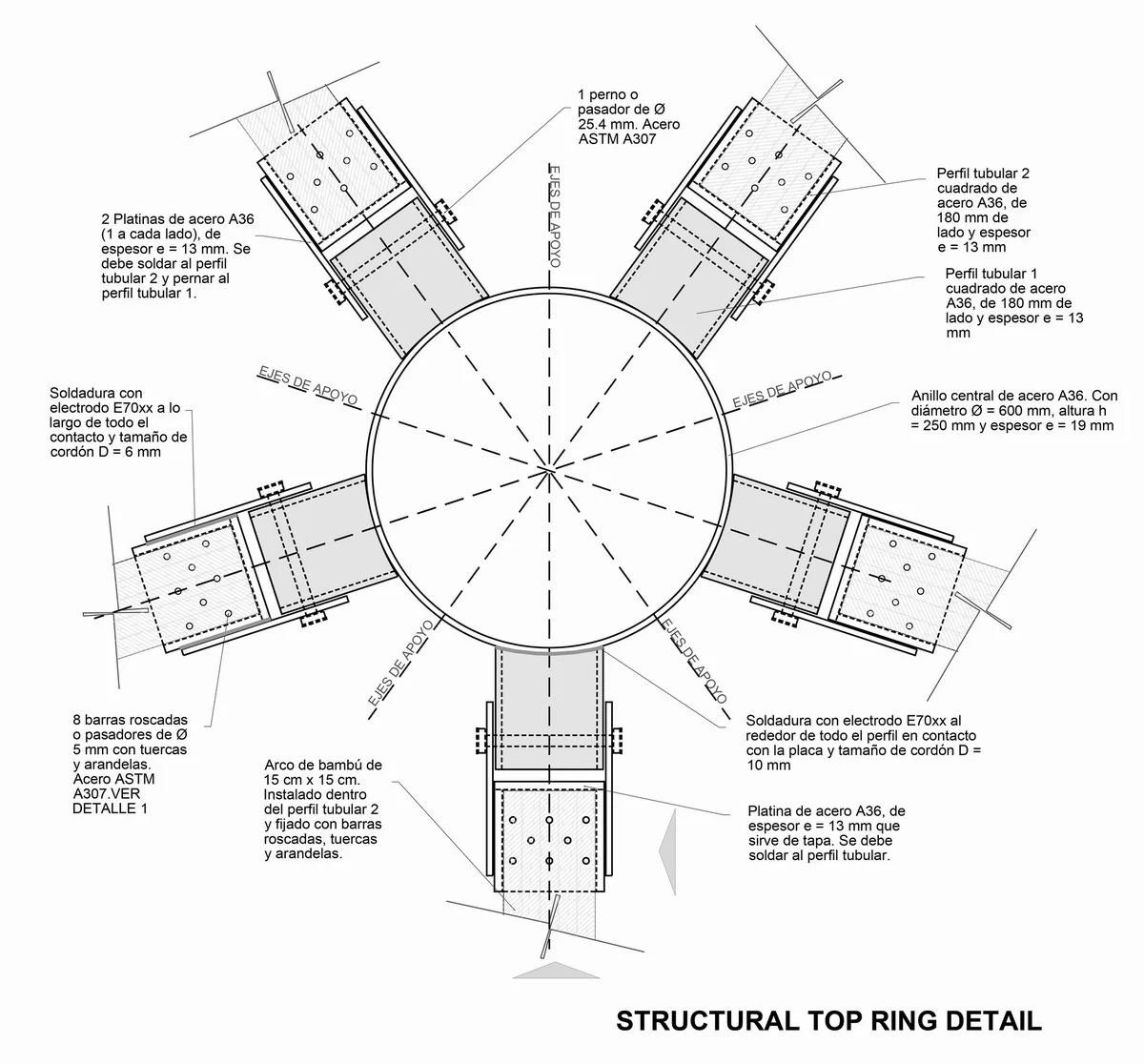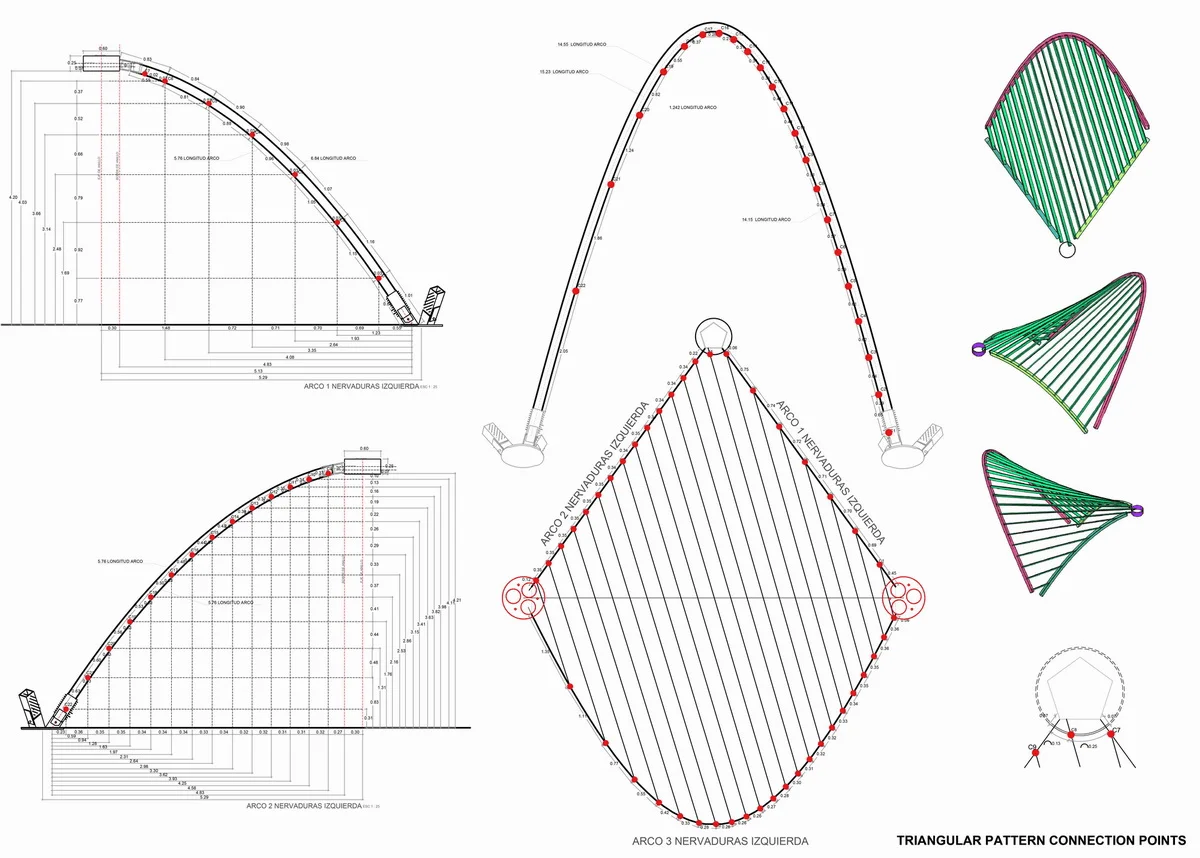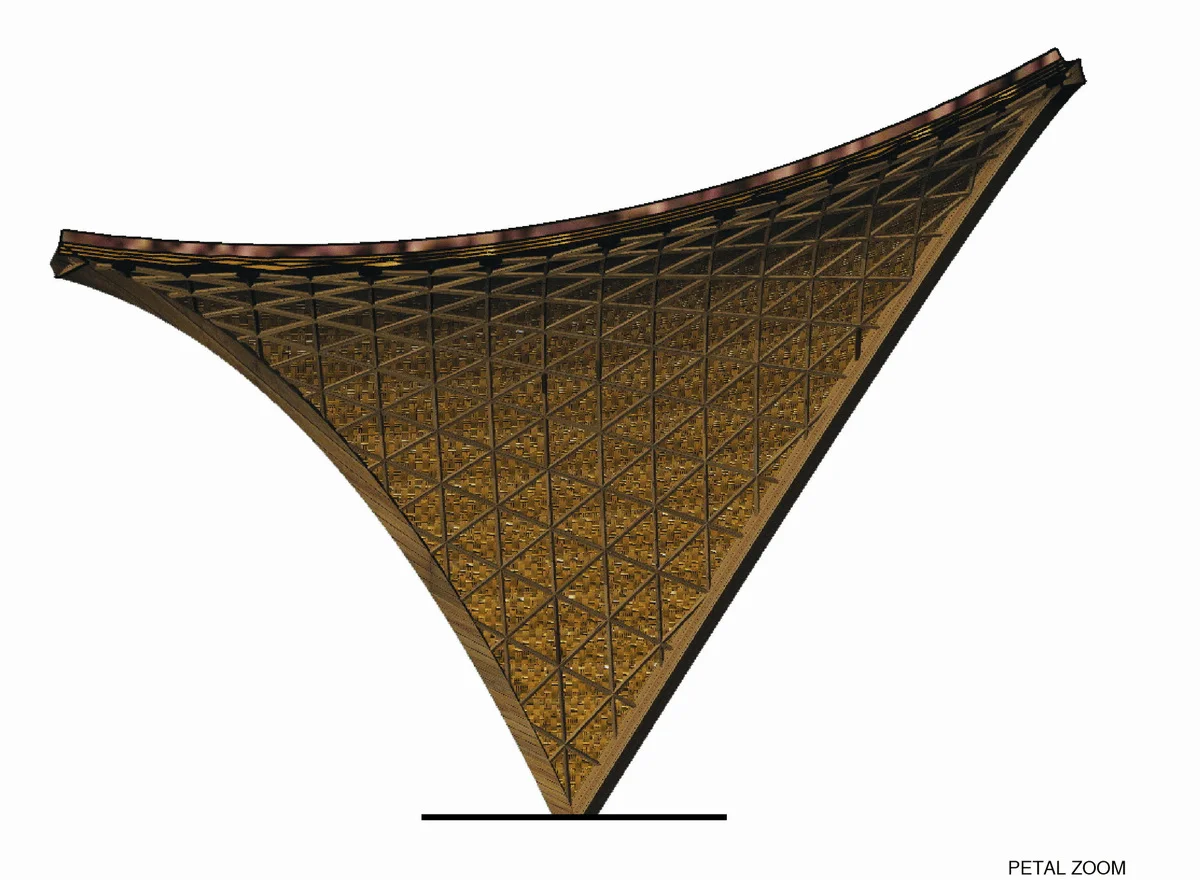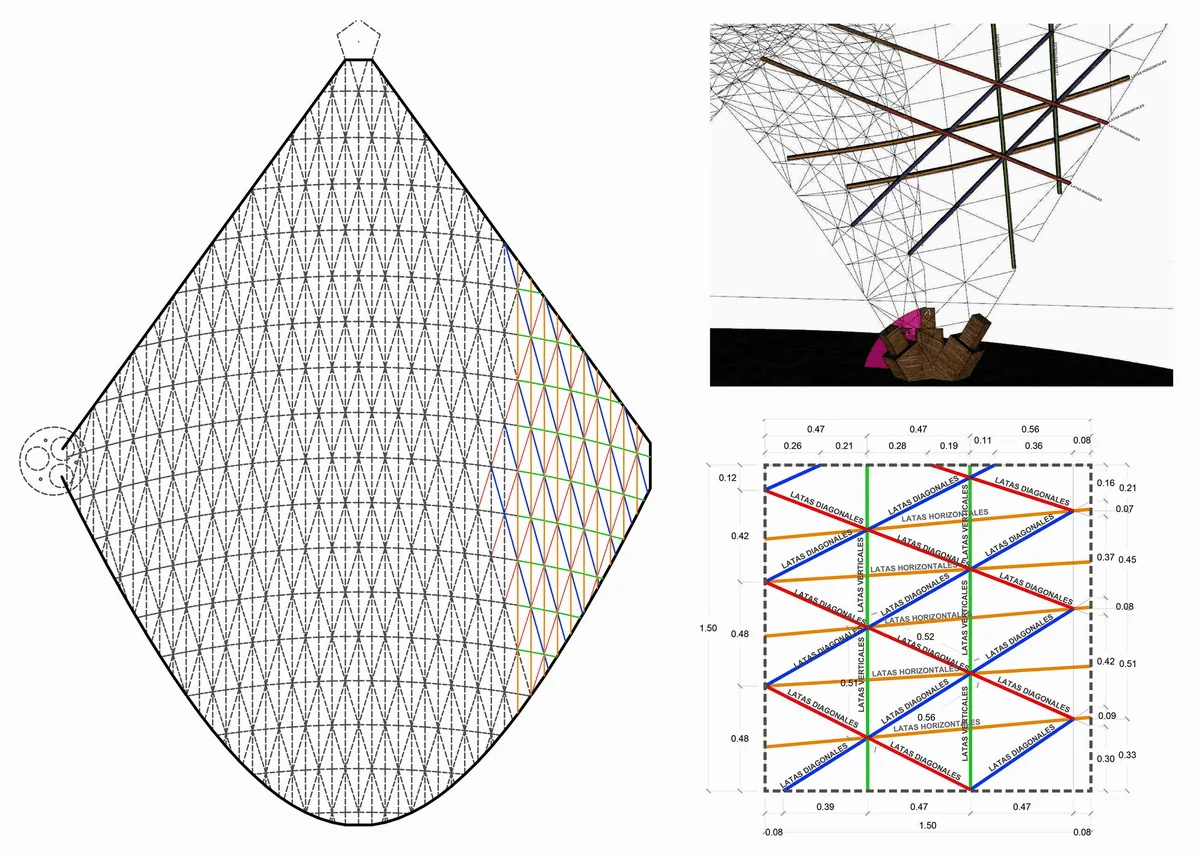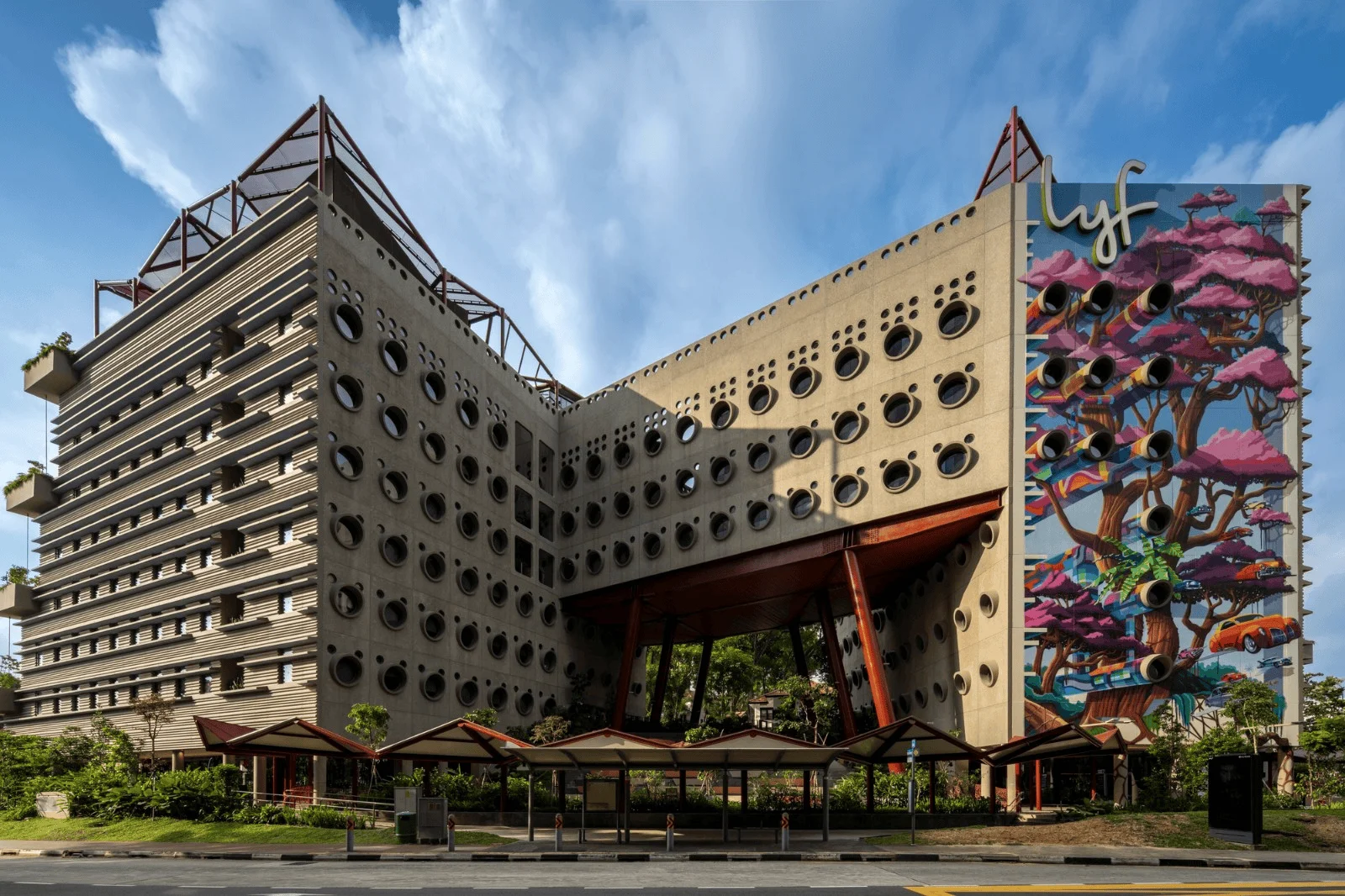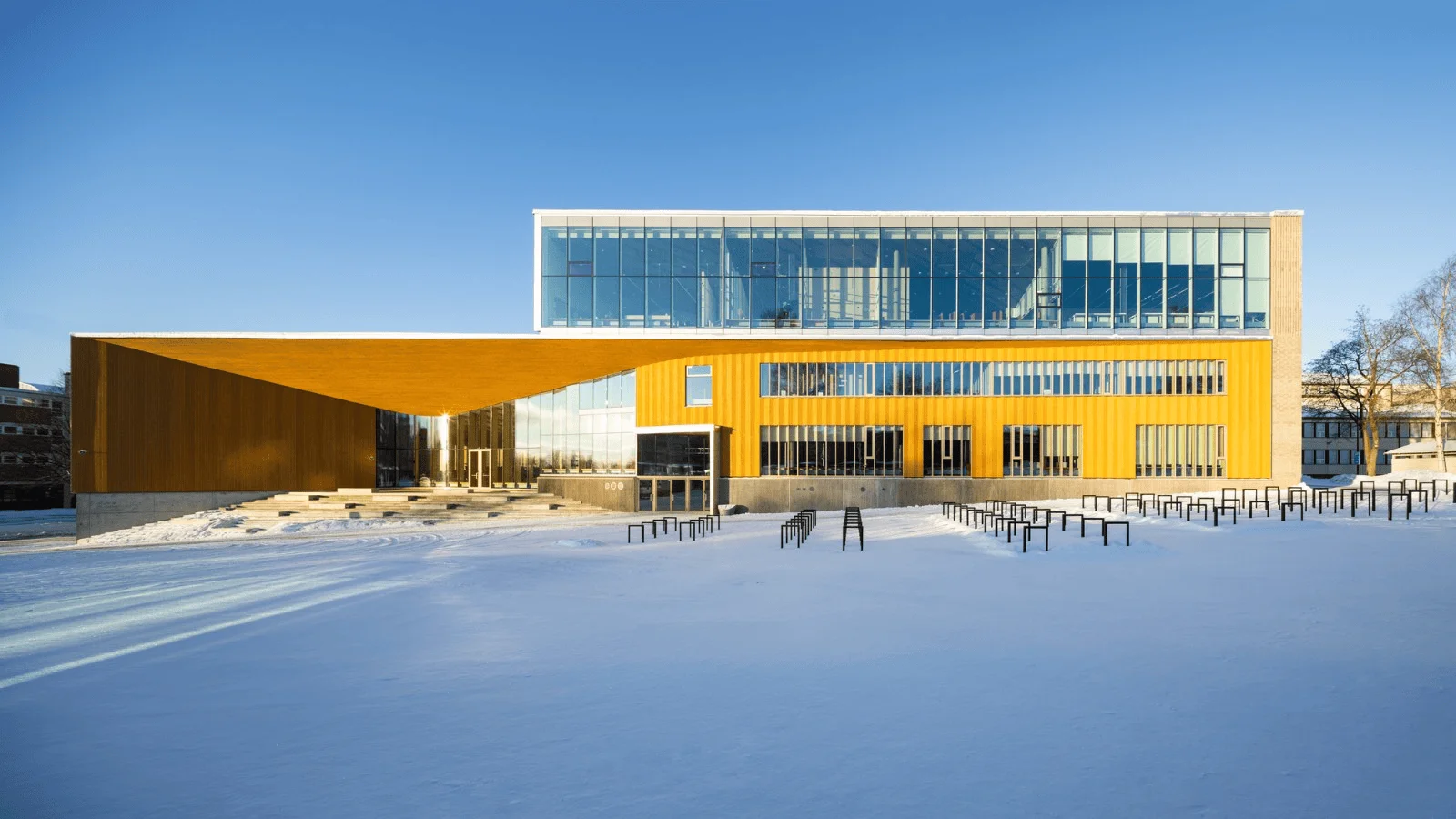Luum Temple is a part of the amenities for a new residential development called Luum Zama, located in Tulum, Mexico. The rising popularity of the Tulum area has seen developers seeking to maximize developable land, with many clearing existing jungle to make way for new buildings. Luum Zama, in contrast, has dedicated 50% of its 8-hectare development to the preservation of existing vegetation, while also implementing a reforestation program with plants native to the region. The master plan for Luum Zama was also designed by Co-Lab Design, who are passionate about raising awareness of the need to conserve and protect the natural resources of the region and building practices. Situated at the heart of the development, the temple is located in a preserved area within the native jungle and accessible only by foot, offering a tranquil natural environment conducive to reflection and a slower pace of life. Gentle breezes filter through the jungle canopy and the open structure, creating dappled lighting effects. This open, five-sided structure offers a variety of therapeutic and activity functions, including yoga, meditation, workshops, and community gatherings. Inspired by the catenary concrete shells of Felix Candela, the project is a five-sided catenary structure built entirely out of bamboo. The arched vaults support each other, a concept of co-existence that permeates the structure where each element depends on the other, a reminder of our interdependence as a community and the achievements we can accomplish when we work together. Made from flat bamboo sections that are bent on-site and joined together by means of threads or by tying them together, individual woven bamboo elements come together to form a whole. CO-LAB used parametric software to design the structure, collaborating closely with the builders and a specialized bamboo structural engineer, which allowed the studio to provide the builders with precise angles, controlled measurements, and connection points for the various structural elements. The bamboo arch beams were assembled from flat bamboo sections bent on-site, cold-formed on the ground, and then screwed and tied together to act as a single element. Once the arches were raised, they were woven together through a triangular pattern, further constrained by two layers of continuous, closely woven bamboo laths that intersect in opposite directions to achieve structural stability. With its favorable carbon sequestration in fast-growing harvest cycles and high strength-to-weight ratio, especially when woven together, bamboo is a sustainable and eco-friendly building material with immense potential. The building’s structure is designed and calculated to withstand hurricane-force winds. The bamboo used in the project is sourced from sustainable plantations in the neighboring state of Chiapas. The exterior is covered with a layer of local Zacate (thatched roof), a typical protective structure in the region that prevents the building from being affected by rainfall, while providing good ventilation in a humid tropical climate. Luum Temple is a demonstration of sustainable development, combining innovative design and engineering with handcrafting and organically sustainable materials. The project carefully intertwines the functionality of the building with the beauty of the site, creating a unique and iconic spatial context for the community and achieving true collaboration between architects, engineers, builders, and owners. We believe that combining modern design technology with handcrafting can have a positive impact on the revitalization of artisan techniques and ways of life that are at risk of being lost or disappearing. The iconic Luum Temple and Luum plan can help create a greater appreciation for, and connection with, the natural world through design, inspiring sustainability. This is crucial, particularly in previously pristine areas that have been targeted for tourism development, where simple and limited local regulations allow well-funded developers to bribe officials and rapidly deplete natural resources. Ultimately, the iconic Luum Temple and Luum plan help raise awareness of better ways to approach sustainable development in the delicate ecological environments of Tulum and beyond.
Project Information:


